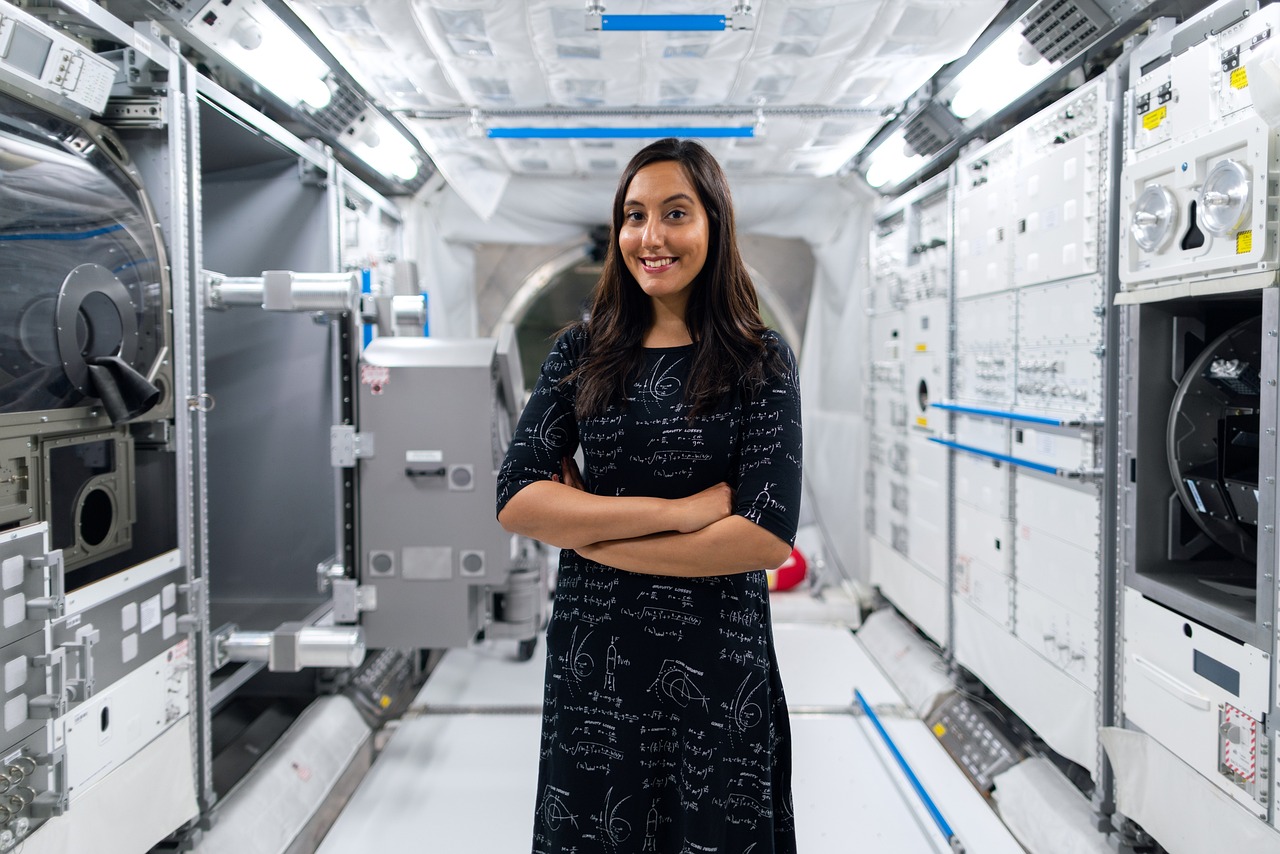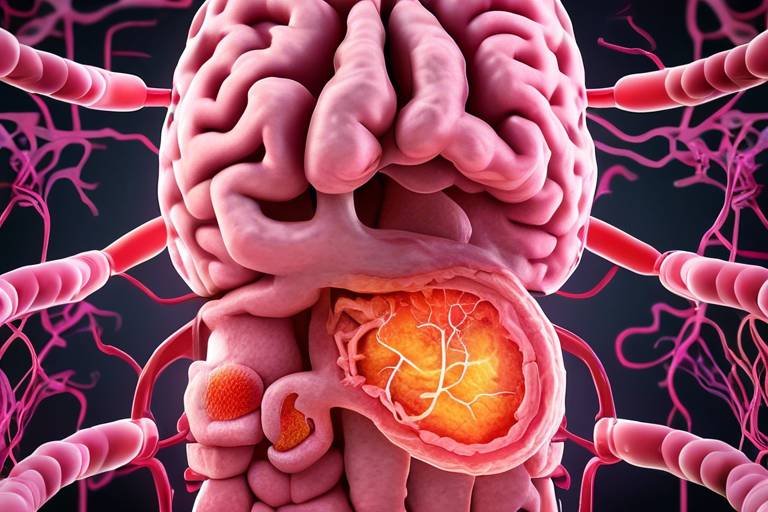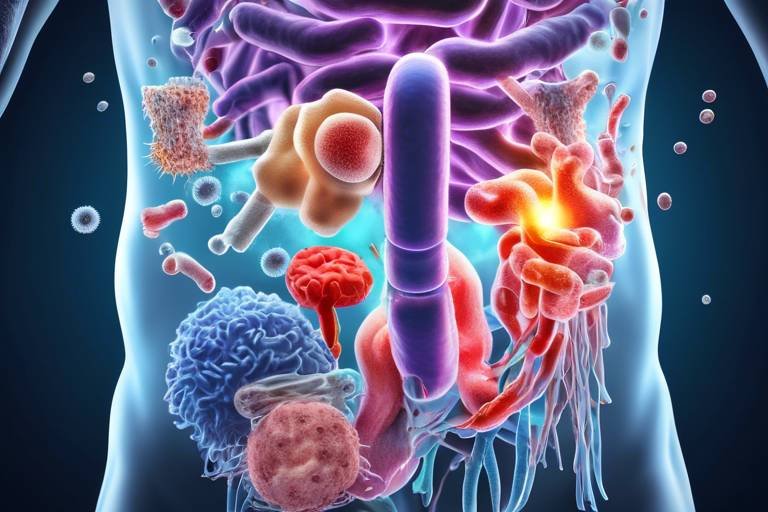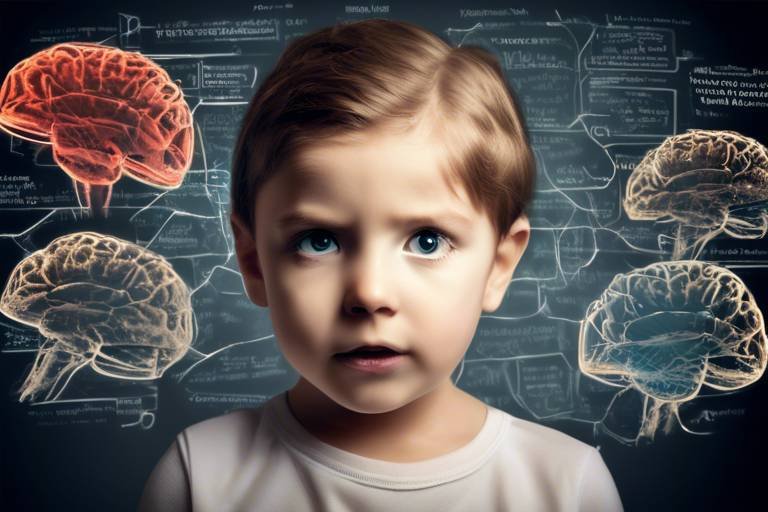How Artificial Intelligence is Changing the Face of Science
In today's fast-paced world, the intersection of artificial intelligence (AI) and science is creating a seismic shift in how research is conducted and discoveries are made. Imagine a world where machines can analyze data faster than a human can blink, where algorithms predict outcomes with astonishing accuracy, and where robots are not just tools but partners in scientific exploration. This is not science fiction; it is the reality we are stepping into as AI continues to evolve and integrate into various scientific fields.
The impact of AI on science is profound. It is not merely a tool for efficiency; it is a catalyst for innovation. For instance, AI systems can sift through millions of research papers, extracting relevant information and identifying gaps in knowledge that need to be addressed. This capability allows scientists to focus on what truly matters—formulating hypotheses and conducting experiments. The potential for collaboration is also enhanced, as AI platforms facilitate communication and data sharing among researchers across the globe.
But what does this mean for the future of scientific inquiry? With AI at the helm, we can expect to see breakthroughs that were once deemed impossible. From predicting the next pandemic to designing sustainable solutions for climate change, the possibilities are endless. However, with great power comes great responsibility. As we embrace AI in science, we must also navigate the ethical considerations that accompany its use. Issues such as data privacy, algorithmic bias, and the implications of AI-driven decision-making are critical discussions that need to take place.
In the following sections, we will delve deeper into how AI is reshaping various scientific domains, from drug discovery to environmental science. We will explore the innovations that are being made, the challenges that lie ahead, and the future possibilities that AI presents in advancing research and discovery. So buckle up, because the journey through the AI revolution in science is just beginning!
AI significantly enhances data analysis capabilities, allowing scientists to process vast amounts of information quickly and accurately. This leads to more informed conclusions and discoveries in various scientific domains. By employing machine learning algorithms, researchers can uncover patterns and insights that would take humans an eternity to discover.
Artificial intelligence is revolutionizing drug discovery by predicting molecular interactions and optimizing compounds. This accelerates the development of new therapies while reducing costs and time in the pharmaceutical industry. Imagine being able to identify potential drug candidates in days instead of months—AI is making this a reality.
Robotics integrated with AI technologies are transforming laboratory environments. These machines are capable of conducting automated experiments and precision tasks, enhancing research efficiency and accuracy across multiple scientific disciplines. Picture a lab where robots perform repetitive tasks, allowing scientists to focus on creative problem-solving and innovation.
Machine learning algorithms are increasingly used for predictive modeling in science. They help researchers forecast trends, identify patterns, and make data-driven decisions in fields such as climate science and epidemiology. This predictive power can be likened to having a crystal ball that reveals the future based on current data trends.
AI tools are being employed to analyze environmental data, monitor ecosystems, and predict climate changes. This provides valuable insights for conservation efforts and sustainable practices in environmental science. For instance, AI can analyze satellite images to track deforestation or predict the impact of climate change on specific habitats.
As AI continues to influence scientific research, ethical considerations arise regarding data privacy, bias, and the implications of AI-driven decisions. It is crucial for scientists and researchers to engage in discussions about responsible AI usage in scientific contexts to ensure that the benefits are maximized while minimizing potential harm.
The integration of AI in healthcare is paving the way for personalized medicine, where treatments are tailored to individual genetic profiles. This approach improves patient outcomes and revolutionizes healthcare practices, making it possible for doctors to prescribe treatments based on a patient's unique genetic makeup rather than a one-size-fits-all solution.
Artificial intelligence facilitates collaboration among scientists by providing platforms for data sharing and communication. This fosters interdisciplinary research that can lead to groundbreaking discoveries and innovations. In a world where knowledge is power, AI is the key that unlocks the doors to collaborative opportunities across borders and disciplines.
Looking ahead, the potential of AI in science is vast. Ongoing advancements promise to further enhance research capabilities, drive innovation, and transform our understanding of the natural world. As we embrace this technological revolution, it is essential to remain vigilant about the ethical implications and strive for a future where AI serves humanity's best interests.
- What is AI's primary role in scientific research? AI enhances data analysis, accelerates drug discovery, and facilitates collaboration among researchers.
- How is AI changing drug discovery? AI predicts molecular interactions and optimizes compounds, reducing costs and time in developing new therapies.
- What ethical considerations should we be aware of? Issues like data privacy, algorithmic bias, and the implications of AI-driven decisions are critical discussions in the scientific community.
- Can AI improve patient outcomes in healthcare? Yes, AI enables personalized medicine, tailoring treatments to individual genetic profiles for better results.

The Role of AI in Data Analysis
Artificial Intelligence (AI) is like a powerful magnifying glass, allowing scientists to scrutinize vast amounts of data with unprecedented speed and accuracy. In today’s world, where information is generated at an astonishing rate, traditional data analysis methods simply cannot keep up. AI steps in as a game-changer, transforming how researchers process and interpret data across various scientific fields.
Imagine having to sift through mountains of data—numbers, images, and more—manually. It would be like searching for a needle in a haystack! But with AI, this daunting task becomes not only manageable but also efficient. AI algorithms can analyze complex datasets in a fraction of the time it would take a human, identifying patterns and trends that might otherwise go unnoticed. This capability is particularly crucial in fields such as genomics, where researchers analyze massive datasets to understand genetic variations and their implications for health.
Moreover, AI enhances the quality of data analysis by minimizing human error. Traditional methods often involve subjective interpretations, which can lead to inconsistencies. In contrast, AI-driven analysis relies on algorithms that can consistently apply the same criteria across datasets, ensuring that results are reliable and reproducible. This is vital in scientific research, where the integrity of data is paramount.
One of the most impressive aspects of AI in data analysis is its ability to learn and improve over time. Through machine learning, AI systems can adapt to new data, refining their algorithms to produce even more accurate results. For instance, in climate science, AI models can process historical weather data and predict future climate patterns, helping scientists understand potential changes in our environment.
To illustrate the impact of AI on data analysis, consider the following table that outlines the key benefits:
| Benefit | Description |
|---|---|
| Speed | AI can process large datasets in seconds, significantly reducing analysis time. |
| Accuracy | Algorithms minimize human error, leading to more reliable results. |
| Pattern Recognition | AI identifies trends and correlations that may not be visible to the human eye. |
| Adaptability | Machine learning allows AI systems to learn from new data and improve their analyses. |
In addition to these benefits, AI also empowers scientists to ask new questions and explore uncharted territories. With the ability to analyze data from diverse sources—such as satellite imagery, social media, and sensor data—AI opens up possibilities for interdisciplinary research and innovation. For example, in epidemiology, AI can analyze data from various health records and social factors to predict disease outbreaks, enabling timely interventions.
However, the integration of AI in data analysis is not without its challenges. Issues such as data privacy, algorithmic bias, and the need for transparency in AI decision-making processes must be addressed. As we harness the power of AI, it’s crucial to ensure that ethical considerations are at the forefront of scientific inquiry.
In conclusion, the role of AI in data analysis is transformative, ushering in a new era of efficiency and accuracy in scientific research. As we continue to explore the potential of AI, we can expect even more groundbreaking discoveries that will shape our understanding of the world around us.

AI in Drug Discovery
Artificial Intelligence (AI) is nothing short of a game changer in the field of drug discovery. Imagine sifting through millions of potential compounds and interactions in mere seconds—this is the power that AI brings to the pharmaceutical industry. Traditionally, drug discovery has been a lengthy and costly process, often taking over a decade and billions of dollars to bring a single new drug to market. However, with the advent of AI technologies, this paradigm is shifting dramatically.
At the heart of this transformation is the ability of AI to analyze vast datasets and identify patterns that would be impossible for humans to discern. For instance, AI algorithms can predict how different molecules will interact, which is crucial for understanding potential drug efficacy and safety. By leveraging machine learning techniques, researchers can train models on existing data, allowing them to make predictions about new compounds with remarkable accuracy.
One of the standout applications of AI in drug discovery is in the realm of molecular simulations. These simulations allow scientists to visualize how drugs interact with biological targets at a molecular level. This not only speeds up the discovery process but also enhances the precision of the compounds being developed. In fact, studies have shown that AI can reduce the time required for lead compound identification by up to 50%, significantly accelerating the entire drug development timeline.
Furthermore, AI is also playing a pivotal role in optimizing drug formulations. By analyzing data from previous experiments, AI can suggest modifications to the chemical structure of a compound that may enhance its effectiveness or reduce side effects. This iterative process of design and testing is much faster and more efficient when powered by AI technologies.
To illustrate the impact of AI in this field, consider the following table that highlights key benefits:
| Benefit | Description |
|---|---|
| Speed | AI algorithms can analyze data and predict outcomes much faster than traditional methods. |
| Cost-Effectiveness | By streamlining the discovery process, AI reduces the overall costs associated with drug development. |
| Precision | AI enhances the accuracy of predictions, leading to better drug candidates. |
| Innovation | AI opens new avenues for exploring previously unconsidered compounds and interactions. |
However, it’s not all smooth sailing. The integration of AI in drug discovery does come with its own set of challenges. Data quality is paramount; if the data fed into AI systems is flawed or biased, the predictions will be as well. Moreover, there is a growing concern regarding the ethical implications of AI in healthcare. As we rely more on AI for drug discovery, questions arise about accountability and transparency in the decision-making processes.
In conclusion, the infusion of AI into drug discovery is revolutionizing how we approach the development of new therapies. From speeding up the identification of promising compounds to optimizing formulations, AI is proving to be an invaluable ally in the quest for innovative treatments. As we continue to navigate the challenges and opportunities presented by AI, one thing is clear: the future of drug discovery is bright, and it’s powered by artificial intelligence.
- How does AI improve drug discovery? AI enhances the speed, accuracy, and cost-effectiveness of identifying new drug candidates.
- What are the challenges of using AI in drug discovery? Key challenges include data quality, ethical considerations, and the need for transparency in AI-driven decisions.
- Can AI replace human researchers in drug discovery? While AI can significantly assist in the process, human expertise remains crucial for interpretation and ethical considerations.

AI-Powered Robotics in Research
Imagine walking into a laboratory where robots are not just tools, but intelligent partners in scientific discovery. AI-powered robotics are reshaping the research landscape, bringing a new level of efficiency and precision to experiments. These advanced machines are equipped with sophisticated algorithms that enable them to learn from their surroundings, adapt to new tasks, and even make decisions based on real-time data. This evolution is akin to having a highly skilled assistant who never tires and can work around the clock, allowing scientists to focus on creativity and innovation rather than repetitive tasks.
In various scientific fields, AI-driven robots are being employed to automate tasks that were once time-consuming and prone to human error. For instance, in biochemical research, robots can conduct thousands of experiments simultaneously, testing various compounds and reactions in a fraction of the time it would take a human researcher. This not only speeds up the research process but also increases the accuracy of results, as robots can perform tasks with a level of consistency that humans simply cannot match.
Moreover, the integration of AI in robotics facilitates real-time data analysis. Robots can collect data from experiments and analyze it on the fly, providing researchers with immediate feedback and insights. This capability allows scientists to adjust their experiments dynamically, optimizing conditions to achieve the best results. For example, in fields like genetics, AI-powered robots can rapidly analyze DNA sequences, helping researchers identify genetic markers associated with diseases.
However, the impact of AI-powered robotics extends beyond mere automation. These technologies are also enabling collaborative research efforts. Scientists from different disciplines can work together more effectively, sharing data and insights through interconnected robotic systems. This collaboration fosters interdisciplinary approaches to research, leading to groundbreaking discoveries that might have been impossible with traditional methods. For instance, a robotic system designed for environmental monitoring can integrate data from various sources, such as satellite imagery and ground sensors, to provide a comprehensive view of ecological changes.
As we look to the future, the potential of AI-powered robotics in research is immense. The continuous advancements in machine learning and robotics promise to unlock new possibilities in scientific exploration. From drug discovery to climate modeling, these intelligent machines are set to play a pivotal role in shaping the next generation of scientific breakthroughs. It’s exciting to think about the challenges we could solve and the mysteries we could unravel with the help of our robotic allies.
- How do AI-powered robots improve research efficiency?
AI-powered robots can automate repetitive tasks, conduct multiple experiments simultaneously, and analyze data in real-time, significantly speeding up the research process. - What are some examples of AI applications in robotics for research?
Examples include robots used in drug discovery to test compounds, automated systems for genetic analysis, and environmental monitoring robots that collect and analyze data. - Are there any risks associated with using AI in research?
While AI offers many benefits, concerns include data privacy, potential biases in algorithms, and the need for ethical guidelines in AI applications. - What is the future of AI-powered robotics in scientific research?
The future looks promising, with ongoing advancements expected to enhance research capabilities, foster collaboration, and lead to innovative solutions for complex scientific challenges.

Machine Learning and Predictive Modeling
In today’s rapidly evolving scientific landscape, machine learning is becoming the backbone of predictive modeling. Imagine trying to predict the weather without any data; it would be like sailing a ship without a compass. Machine learning provides that compass, allowing scientists to make sense of complex datasets and forecast future events with remarkable accuracy. By employing algorithms that learn from data, researchers can identify patterns and trends that might be invisible to the naked eye.
Take climate science, for example. With the help of machine learning, scientists can analyze historical climate data and predict future climate patterns. This is crucial for understanding climate change and its potential impacts on our planet. By feeding algorithms vast amounts of data from various sources—like satellite imagery, ocean temperatures, and atmospheric conditions—researchers can create models that simulate future climate scenarios. The outcome? More informed decision-making when it comes to environmental policies and conservation efforts.
Moreover, machine learning isn't just limited to climate science. Its applications span a variety of fields, including epidemiology, where it helps in tracking disease outbreaks. By analyzing data from social media, health reports, and geographical information, machine learning algorithms can predict how diseases spread, allowing public health officials to react swiftly. This predictive capability is akin to having a crystal ball that provides insights into potential health crises before they escalate.
But how does it all work? At its core, machine learning involves training algorithms on historical data, enabling them to recognize patterns. For instance, in drug discovery, researchers can use machine learning to analyze the effectiveness of different compounds based on previous studies. This not only speeds up the discovery process but also significantly reduces costs. The table below illustrates some key differences between traditional modeling and machine learning approaches:
| Aspect | Traditional Modeling | Machine Learning |
|---|---|---|
| Data Requirement | Limited data sets | Large, diverse data sets |
| Flexibility | Rigid, predefined models | Adaptive, learns from data |
| Prediction Accuracy | Often less accurate | Higher accuracy through pattern recognition |
| Time Efficiency | Time-consuming | Faster processing and predictions |
Despite its advantages, the integration of machine learning into scientific research is not without challenges. For instance, the quality of predictions hinges on the quality of the data used. If the data is biased or incomplete, the model's predictions can also be skewed. This raises important questions about data integrity and the ethical implications of relying on algorithms for critical decisions.
Moreover, as machine learning continues to evolve, there’s an increasing need for interdisciplinary collaboration. Scientists, data analysts, and ethicists must work hand in hand to ensure that the models not only provide accurate predictions but also adhere to ethical standards. After all, the goal is not just to predict the future but to do so responsibly.
In conclusion, machine learning and predictive modeling are reshaping the way we conduct scientific research. They offer powerful tools for understanding complex systems, predicting outcomes, and making data-driven decisions. As these technologies continue to advance, the possibilities for scientific discovery are truly limitless.
- What is machine learning? Machine learning is a subset of artificial intelligence that enables systems to learn from data and improve their performance over time without being explicitly programmed.
- How does predictive modeling work? Predictive modeling uses statistical techniques and algorithms to analyze historical data and predict future outcomes.
- What are some applications of machine learning in science? Machine learning is used in various fields, including climate science, epidemiology, drug discovery, and environmental monitoring.
- What are the challenges of using machine learning in research? Challenges include data quality, potential biases, and the need for interdisciplinary collaboration to ensure ethical use of AI technologies.

AI in Environmental Science
Artificial Intelligence is making waves in the field of environmental science, acting as a powerful ally in the quest to understand and protect our planet. Imagine having a tool that can sift through mountains of data, recognize patterns, and predict changes in our ecosystems with pinpoint accuracy. That’s exactly what AI is doing! From analyzing satellite imagery to monitoring wildlife populations, AI is transforming how we approach environmental challenges.
One of the most exciting applications of AI is in the analysis of environmental data. Traditional methods of data collection can be labor-intensive and time-consuming. However, AI algorithms can process vast datasets in a fraction of the time, allowing scientists to gain insights that were previously out of reach. For instance, AI can analyze climate data to identify trends in temperature changes, rainfall patterns, and even predict extreme weather events. This capability is crucial for developing effective strategies to combat climate change and mitigate its impacts.
Moreover, AI is playing a significant role in monitoring ecosystems. By deploying sensors and drones equipped with AI, researchers can collect real-time data on various environmental parameters. This technology allows for continuous monitoring of air and water quality, soil health, and biodiversity. For example, using AI to analyze data from drones can help track deforestation rates in real-time, enabling quicker responses to illegal logging activities. The ability to monitor ecosystems continuously means that scientists can act swiftly to protect endangered species and habitats.
Another area where AI shines is in predicting climate changes. Machine learning models can be trained on historical climate data to forecast future conditions. These predictions are invaluable for policymakers and conservationists alike, as they provide a clearer picture of what to expect in the coming years. For instance, AI can help model the potential impacts of rising sea levels on coastal communities, allowing for better planning and resource allocation.
However, the integration of AI in environmental science is not without its challenges. Data privacy, the potential for bias in AI algorithms, and the need for interdisciplinary collaboration are all critical considerations that must be addressed. It's essential for scientists to work together with ethicists and policymakers to ensure that AI is used responsibly and effectively in environmental research.
In conclusion, AI is revolutionizing environmental science by providing powerful tools for data analysis, ecosystem monitoring, and climate prediction. As we continue to face pressing environmental issues, the role of AI will only become more significant. By harnessing the potential of AI, we can develop innovative solutions and drive meaningful change in our efforts to protect the planet.
- How is AI used in environmental science?
AI is used to analyze large datasets, monitor ecosystems, and predict climate changes, enabling better decision-making in conservation efforts. - What are the benefits of using AI for environmental monitoring?
AI allows for real-time data collection and analysis, leading to quicker responses to environmental threats and more effective conservation strategies. - What challenges does AI face in environmental science?
Challenges include data privacy concerns, potential algorithm bias, and the need for interdisciplinary collaboration to ensure responsible use.

Ethical Considerations of AI in Science
The rise of artificial intelligence (AI) in scientific research is nothing short of revolutionary. However, with great power comes great responsibility. As AI systems become more integrated into the scientific process, ethical considerations must be at the forefront of discussions. Data privacy is one of the most pressing issues. In an age where data is the new gold, how do we ensure that personal and sensitive information is protected? Researchers often rely on vast datasets, which can include personal health information, environmental data, and more. The potential for misuse or unauthorized access raises significant concerns.
Moreover, bias in AI algorithms is another critical area to consider. AI systems learn from historical data, and if that data contains biases, the AI can perpetuate and even amplify them. For example, if an AI model is trained on data that reflects historical inequalities in healthcare, it might produce results that disadvantage certain populations. This can lead to inequitable outcomes in research and treatment, which is particularly concerning in fields like medicine where lives are at stake.
Additionally, the implications of AI-driven decisions can be profound. When AI systems make recommendations or predictions, who is held accountable if things go wrong? This question becomes even more complicated when considering the potential for AI to influence critical decisions in areas such as drug approval or environmental regulation. Scientists, ethicists, and policymakers must work together to establish frameworks that address these issues and ensure that AI is used responsibly.
Furthermore, the ethical landscape is constantly evolving. As AI technologies advance, so too do the challenges they present. For instance, the use of AI in surveillance and monitoring raises questions about consent and autonomy. Are we, as a society, comfortable with the idea that AI could be used to monitor our activities, even in the name of scientific advancement? This is where the concept of responsible AI comes into play, emphasizing the need for transparency, accountability, and ethical standards in AI development and application.
In light of these concerns, it's essential for the scientific community to engage in ongoing discussions about the ethical implications of AI. Here are some key points that should be part of that dialogue:
- Transparency: AI systems should be transparent in their workings, allowing researchers and the public to understand how decisions are made.
- Accountability: There must be clear lines of accountability for decisions made by AI, especially in high-stakes environments.
- Inclusivity: Efforts should be made to ensure diverse representation in the datasets used to train AI systems, minimizing bias.
- Regulation: There should be regulatory frameworks governing the use of AI in science to protect against misuse and ensure ethical practices.
Ultimately, the ethical considerations surrounding AI in science are complex and multifaceted. As we continue to explore the incredible potential of AI, we must also be vigilant in addressing the ethical challenges it presents. This requires collaboration across disciplines, including ethics, law, and technology, to create a balanced approach that maximizes benefits while minimizing risks.
Q: What are the main ethical concerns regarding AI in science?
A: The main ethical concerns include data privacy, algorithmic bias, accountability for AI-driven decisions, and the implications of surveillance and monitoring.
Q: How can bias in AI algorithms be mitigated?
A: Bias can be mitigated by ensuring diverse representation in training datasets, conducting regular audits of AI systems, and involving ethicists in the development process.
Q: Why is transparency important in AI systems?
A: Transparency helps stakeholders understand how AI systems operate, which is crucial for trust, accountability, and informed decision-making.
Q: What role do regulations play in AI ethics?
A: Regulations provide a framework for the responsible use of AI, ensuring that ethical standards are upheld and that there are consequences for misuse.

AI and Personalized Medicine
Artificial Intelligence is not just a buzzword in the tech world; it’s a game-changer in the realm of healthcare, particularly in the field of personalized medicine. Imagine a world where treatments are tailored specifically to your genetic makeup, lifestyle, and environmental factors. Sounds like science fiction, right? Well, that future is already unfolding before our eyes thanks to the incredible capabilities of AI. By analyzing vast datasets, AI can identify unique patterns in individual health profiles, enabling healthcare providers to offer treatments that are more effective and have fewer side effects.
At the heart of this transformation is the ability of AI to process and analyze massive amounts of data from various sources, including genomic data, electronic health records, and even wearable health technology. For instance, AI algorithms can sift through genetic information to pinpoint mutations that might affect how a patient responds to a particular drug. This level of analysis allows for a shift from the traditional "one-size-fits-all" approach to a more nuanced strategy that considers the unique characteristics of each patient.
Moreover, AI can enhance the drug development process itself. By predicting how different compounds interact with specific genetic profiles, researchers can prioritize which drugs to develop further, significantly speeding up the entire process. This not only reduces costs but also brings potentially life-saving treatments to patients much quicker than conventional methods. The implications are profound, especially for diseases like cancer, where treatment efficacy can vary dramatically from one patient to another.
However, as we embrace this exciting frontier, it’s crucial to address the ethical considerations that come with it. Data privacy, consent, and the potential for algorithmic bias are issues that cannot be overlooked. The healthcare industry must ensure that AI systems are designed to be transparent and equitable, maintaining the trust of patients while harnessing the power of technology. After all, with great power comes great responsibility.
In summary, the integration of AI into personalized medicine is paving the way for a revolutionary approach to healthcare. By utilizing advanced algorithms and data analytics, we can move towards a future where medical treatments are not just effective but also tailored to the individual. This shift has the potential to improve patient outcomes dramatically, making healthcare not just a service but a personalized experience.
- What is personalized medicine?
Personalized medicine is an approach to patient care that tailors treatment based on individual characteristics, such as genetics and lifestyle. - How does AI contribute to personalized medicine?
AI analyzes large datasets to identify patterns and predict how patients will respond to specific treatments, leading to more effective and customized healthcare solutions. - Are there ethical concerns with AI in healthcare?
Yes, issues such as data privacy, consent, and potential biases in AI algorithms are significant concerns that need to be addressed to ensure responsible usage. - Can AI improve drug discovery?
Absolutely! AI can predict molecular interactions and optimize compounds, significantly speeding up the drug development process and reducing costs.

AI in Scientific Collaboration
In today's fast-paced world, the ability to collaborate effectively is more crucial than ever, especially in scientific research. Artificial Intelligence (AI) is stepping in as a game-changer, revolutionizing how scientists interact, share data, and work together on complex projects. Imagine a bustling laboratory where researchers from different corners of the globe can come together seamlessly, sharing insights and findings in real-time. This isn't just a dream; it's becoming a reality thanks to AI.
One of the most significant contributions of AI to scientific collaboration is the development of intelligent platforms that facilitate data sharing and communication. These platforms can analyze vast datasets and highlight relevant information, making it easier for researchers to find the data they need without sifting through mountains of irrelevant information. For instance, AI algorithms can identify patterns and connections in data that might not be immediately obvious to human researchers, fostering a deeper understanding of complex issues.
Moreover, AI-powered tools can assist in managing collaborative projects by automating routine tasks. This automation allows scientists to focus more on the creative and analytical aspects of their work. Think about it: instead of spending hours on administrative tasks, researchers can dedicate their time to brainstorming innovative ideas or conducting experiments. This shift not only enhances productivity but also leads to a more dynamic and engaging research environment.
AI also plays a crucial role in breaking down geographical barriers. With the ability to connect researchers virtually, AI fosters an environment of inclusivity and diversity in scientific inquiry. For example, scientists from developing countries can now easily collaborate with leading experts worldwide, bringing fresh perspectives and ideas to the table. This cross-pollination of thoughts can lead to groundbreaking discoveries that might not have been possible in a more isolated research setting.
However, while the benefits of AI in scientific collaboration are immense, there are also challenges to consider. Data privacy and security become paramount when researchers share sensitive information. It’s essential to have robust systems in place to protect this data while still allowing for open collaboration. Additionally, there’s the risk of bias in AI algorithms, which can inadvertently skew research outcomes. Therefore, it’s vital for scientists to remain vigilant and ensure that the tools they use are transparent and fair.
In summary, AI is not just enhancing scientific collaboration; it's transforming it into a more efficient, inclusive, and innovative process. As researchers continue to harness the power of AI, we can expect to see a surge in interdisciplinary projects that push the boundaries of what we know. The future of science is here, and it is collaborative, powered by intelligent technologies that bring us closer together in our quest for knowledge.
- How does AI improve collaboration among scientists? AI enhances collaboration by providing intelligent platforms for data sharing, automating routine tasks, and connecting researchers globally.
- What are the main challenges of using AI in scientific collaboration? The key challenges include data privacy concerns, the risk of bias in AI algorithms, and ensuring transparency in AI-driven processes.
- Can AI help in interdisciplinary research? Yes, AI fosters interdisciplinary research by enabling scientists from different fields to collaborate more effectively, sharing insights and methodologies.
- What is the future of AI in scientific collaboration? The future looks promising, with ongoing advancements in AI expected to further enhance collaboration, leading to innovative discoveries and solutions to complex problems.

The Future of AI in Science
This article explores the transformative impact of artificial intelligence (AI) on various scientific fields, highlighting innovations, challenges, and future possibilities that AI presents in advancing research and discovery.
AI significantly enhances data analysis capabilities, allowing scientists to process vast amounts of information quickly and accurately, leading to more informed conclusions and discoveries in various scientific domains.
Artificial intelligence is revolutionizing drug discovery by predicting molecular interactions and optimizing compounds, which accelerates the development of new therapies while reducing costs and time in the pharmaceutical industry.
Robotics integrated with AI technologies are transforming laboratory environments, enabling automated experiments and precision tasks that enhance research efficiency and accuracy across multiple scientific disciplines.
Machine learning algorithms are increasingly used for predictive modeling in science, helping researchers forecast trends, identify patterns, and make data-driven decisions in fields such as climate science and epidemiology.
AI tools are being employed to analyze environmental data, monitor ecosystems, and predict climate changes, providing valuable insights for conservation efforts and sustainable practices in environmental science.
As AI continues to influence scientific research, ethical considerations arise regarding data privacy, bias, and the implications of AI-driven decisions, necessitating discussions about responsible AI usage in scientific contexts.
The integration of AI in healthcare is paving the way for personalized medicine, where treatments are tailored to individual genetic profiles, improving patient outcomes and revolutionizing healthcare practices.
Artificial intelligence facilitates collaboration among scientists by providing platforms for data sharing and communication, fostering interdisciplinary research that can lead to groundbreaking discoveries and innovations.
Looking ahead, the potential of AI in science is vast, with ongoing advancements promising to further enhance research capabilities, drive innovation, and transform our understanding of the natural world. Imagine a future where AI systems not only assist scientists but also collaborate with them, generating hypotheses and conducting experiments autonomously. This scenario is not as far-fetched as it may seem. With the rapid evolution of AI technologies, we are on the brink of a new era in scientific exploration.
One of the most exciting prospects is the ability of AI to analyze complex datasets at unprecedented speeds. For instance, in fields like genomics and astrophysics, AI can sift through terabytes of data to identify patterns and anomalies that human researchers might overlook. This capability could lead to breakthroughs in understanding diseases or uncovering new celestial phenomena.
Furthermore, AI can enhance predictive modeling in various scientific domains. By leveraging vast amounts of historical data, AI algorithms can make accurate predictions about future trends. This is particularly crucial in fields such as climate science, where understanding future climate scenarios can inform policy decisions and conservation efforts.
However, the future of AI in science isn't without its challenges. As we integrate AI more deeply into research, we must address ethical considerations, such as ensuring data privacy and mitigating algorithmic biases. It’s essential to establish guidelines that govern the responsible use of AI in scientific contexts, ensuring that these powerful tools are used to benefit society as a whole.
In conclusion, the future of AI in science is not just about technological advancements; it's also about fostering a collaborative environment where humans and machines work together to push the boundaries of knowledge. The journey ahead is filled with possibilities, and as we embrace AI, we must also remain vigilant stewards of its ethical implications.
- How is AI currently used in scientific research? AI is utilized for data analysis, predictive modeling, and automating experiments, among other applications.
- What are the benefits of AI in drug discovery? AI accelerates the drug discovery process by predicting molecular interactions and optimizing compounds, leading to faster and more cost-effective development of new therapies.
- What ethical concerns are associated with AI in science? Ethical concerns include data privacy, algorithmic bias, and the implications of AI-driven decisions in research.
- How can AI improve personalized medicine? AI can analyze individual genetic profiles to tailor treatments, improving patient outcomes in healthcare.
Frequently Asked Questions
- What is the role of AI in data analysis?
AI plays a crucial role in data analysis by enabling scientists to process and analyze large datasets quickly and accurately. This capability allows researchers to uncover patterns and insights that might be missed through traditional analysis methods, leading to more informed conclusions and groundbreaking discoveries.
- How is AI changing drug discovery?
AI is revolutionizing drug discovery by predicting how different molecules will interact and optimizing chemical compounds. This accelerates the development of new therapies, reducing both the time and costs associated with bringing new drugs to market, ultimately benefiting patients and the pharmaceutical industry.
- What impact does AI have on robotics in research?
AI-powered robotics are transforming laboratory environments by automating experiments and performing precision tasks. This not only enhances research efficiency and accuracy but also frees up scientists to focus on more complex problems, leading to faster and more innovative research outcomes.
- Can machine learning really predict future trends in science?
Absolutely! Machine learning algorithms are increasingly used for predictive modeling in various scientific fields. They help researchers forecast trends and identify patterns, which is particularly valuable in areas like climate science and epidemiology, where understanding future scenarios is critical.
- How does AI contribute to environmental science?
AI tools are significantly enhancing environmental science by analyzing vast amounts of environmental data, monitoring ecosystems, and predicting climate changes. These insights are essential for conservation efforts and developing sustainable practices that protect our planet.
- What ethical considerations arise from using AI in science?
As AI becomes more integrated into scientific research, ethical considerations such as data privacy, bias in algorithms, and the implications of AI-driven decisions come to the forefront. It is crucial for the scientific community to engage in discussions about responsible AI usage to address these challenges.
- How is AI shaping personalized medicine?
AI is paving the way for personalized medicine by tailoring treatments to individual genetic profiles. This approach improves patient outcomes and revolutionizes healthcare practices, allowing for more effective and targeted therapies.
- In what ways does AI facilitate scientific collaboration?
AI enhances collaboration among scientists by providing platforms for data sharing and communication. This fosters interdisciplinary research, enabling teams from different fields to work together, leading to groundbreaking discoveries and innovations.
- What does the future hold for AI in science?
The future of AI in science is incredibly promising. Ongoing advancements are expected to further enhance research capabilities, drive innovation, and deepen our understanding of the natural world, opening up new frontiers in scientific exploration.



















